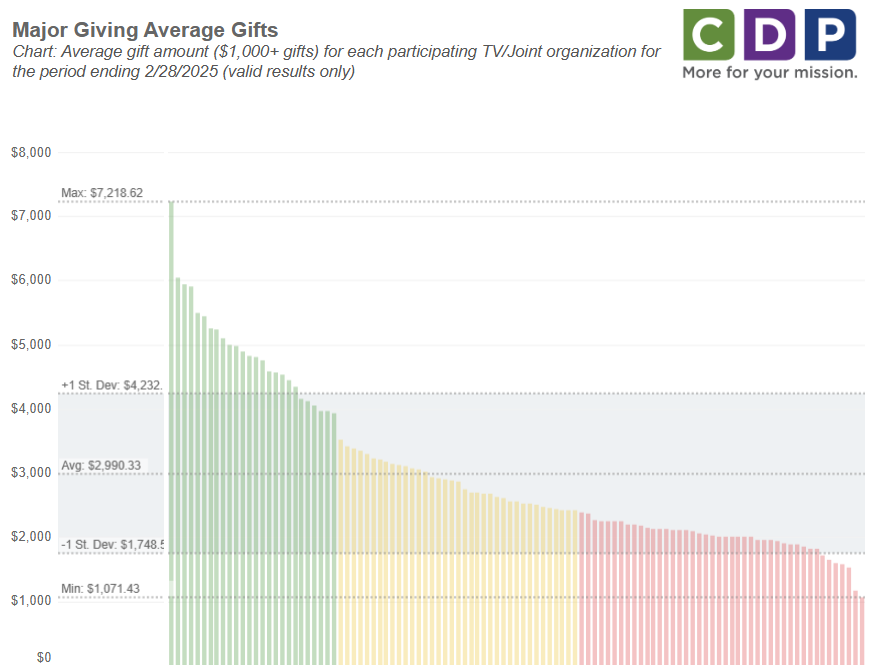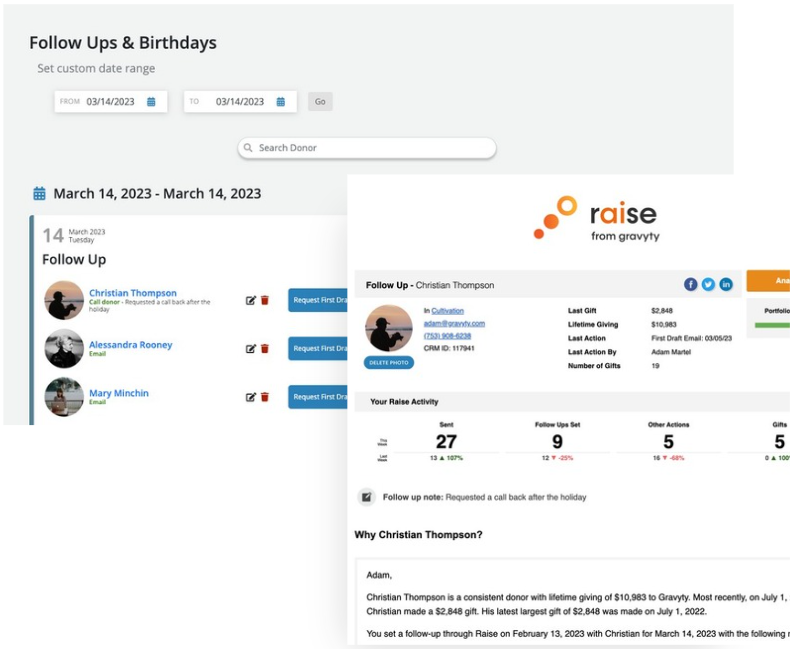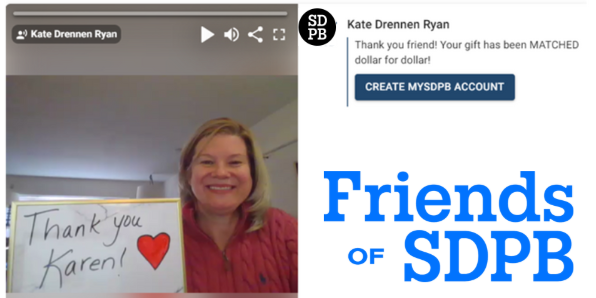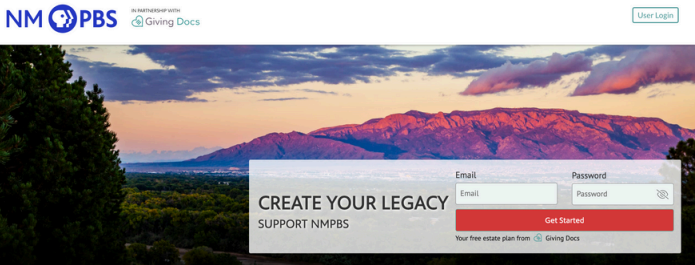Taking Public Media Fundraising from Transactional to Transformational
Public media is at an inflection point. As the media landscape rapidly changes and funding challenges and threats grow, we need to be more flexible and develop new strategies for long-term financial stability. There’s no doubt that we must adapt and innovate to ensure both individual local stations' and system-wide sustainability.
Where do we begin? The media landscape is shifting fast — and it’s disrupting strategies public media has long relied on to meet fundraising goals. What if I told you that viewing public media fundraising through the lens of Pareto’s Principle — more commonly known as the 80-20 rule — could be the paradigm shift we need? Intrigued? Read on.
Pinpointing Key Opportunities
Last fall, CDP conducted a digital fundraising landscape survey to better understand the challenges public media faces in both legacy fundraising (like direct mail and pledge drives) and increasingly important digital efforts. A few key insights emerged. First, respondents said that on-air pledge is still the primary method for acquiring donors, closely followed by digital channels (email, web and Passport). Additionally, 94% of survey respondents indicated younger audiences are underrepresented or underserved by their station. Another significant finding: nearly 60% of respondents reported ongoing challenges moving donors up the giving pyramid into mid-level and major support.
Alongside the survey results, CDP’s Innovation Council pinpointed several opportunities based on insights from their own organizations. Our discussions revealed similar themes, such as the decline in broadcast audiences, which underscores the importance of digital fundraising strategies. We also recognized the need to balance public media’s approach to maintaining the loyalty of our aging demographic while attracting younger donors to secure long-term sustainability. Additionally, there is a needed shift from transactional giving to high-impact philanthropy, aimed at enhancing mid-level, major and planned giving.
The findings from the CDP digital fundraising landscape survey and the insights from the Innovation Council clearly highlight the need to balance transactional giving with more mission-focused philanthropic investments: the kind of donors who can provide transformational support. Public media has built a robust contributor base over the years through pledge drives and direct mail fundraising. With the emergence of digital platforms and streaming opportunities like Passport, it's vital to take a donor-centric approach, developing a robust pipeline of supporters who are passionate about your content and have the potential to increase their support for your mission.
Transformative Giving: Unlocking Philanthropic Potential
To truly achieve transformational philanthropy success in public media, it's crucial to nurture and manage your donor pipeline for mid-level, major and planned giving opportunities. That’s where Pareto’s Principle comes in! In the broader nonprofit sector, the 80-20 rule often applies, where approximately 80% of revenue comes from 20% of donors. However, in public media, the situation is quite different. On average, only 1.5% of donors contribute $1,000 or more, yet these donations only account for around 28% of revenue. While the share of revenue from gifts of $1,000 or more has steadily increased each year since 2020, if we can collectively move closer to the 80-20 revenue-to-donors nonprofit industry average, this would have a significant impact.
The potential for growth is even more significant when we consider what constitutes a major gift. In public media, definitions of major gifts vary, often starting at $1,000 or $1,200. Looking across CDP’s National Reference File, the average gift amount for $1,000+ gifts nearing $3,000. In the broader nonprofit sector, major gifts typically start at $5,000 and can well exceed $25,000. If public media can challenge ourselves to think bigger and adopt a similar perspective on major gifts, we can achieve even greater progress.
Considering the current funding climate and the philanthropic opportunities in public media, personalized stewardship is more important than ever. Every interaction matters when it comes to retaining donors and encouraging them to increase their investment. Just as you should be emphasizing the importance of "local" to demonstrate value and enhance your mission in response to funding threats, it's vital to apply the same approach to building relationships with donors in your community. Now more than ever, it's essential to communicate your value and strengthen one-to-one connections with all your donors.
The Importance of Investing in Transformation
It's clear that investing in talent, resources and emerging technological tools today is crucial for unlocking philanthropic dollars both now and in the future. For many organizations, adding new staff when budgets are already tight isn't feasible. That's why adopting use of cost-effective tools is so important. CDP is here to help find the solutions that deliver the most value to public media.
Looking to engage more donors and build personal relationships? Raise from Gravyty offers a revolutionary solution for personalized fundraising at scale using artificial intelligence (AI). This suite of gift officer tools is especially valuable when adding more staff isn't feasible. With Raise, you receive prioritized outreach suggestions to connect with the right donor at the right time and AI-generated email drafts that enable rapid communication with your donors. Organizations using Raise can personally reach four times more donors, driving greater engagement and increasing giving at all levels of the donor pyramid.
Looking for a unique way to stand out with your donors? Gratavid from Gravyty is an innovative engagement tool that enhances donor stewardship through fully branded, personalized video messages. In a time when every nonprofit is reaching out to their donors, you can ensure your message cuts through the noise. With Gratavid, thanking mid-level and major donors, sending special messages like birthday wishes and engaging new donors becomes quick and easy. In this heightened funding climate, Friends of SDPB (South Dakota Public Broadcasting) are even using Gratavid to thank donors and encourage them to join Friends of SDPB’s Legislative Action Committee to support continued state funding.
Looking to turn the loyalty and longevity of your donor base into more planned gifts? Giving Docs’ comprehensive platform offers an array of tools to write wills, codicils and health care directives, along with options to facilitate gifts of stocks, securities, donor-advised funds (DAFs) and qualified charitable distributions (QCDs). These tools are provided to donors free of charge for their lifetime as a gift from the station. Giving Docs boasts one of the highest gift disclosure rates in the industry, with an average of 69% of public media users revealing their legacy gift intentions to the organization. Additionally, public media saw an impressive $3.5 million in estimated completed gifts during Make-A-Will month last August alone.
Considering the current funding uncertainty, it's important to continue focusing on what is essential for growing revenue and making a strong impression with donors. Rather than cutting back, this is an ideal moment to invest in the tools and resources that can turn transformational giving into a reality. The future of your organization — and our public media ecosystem — depends on bold choices that strengthen both today’s impact and tomorrow’s possibilities.






